March 2025
Authors Jason Cavadini and Eileen Kladivko
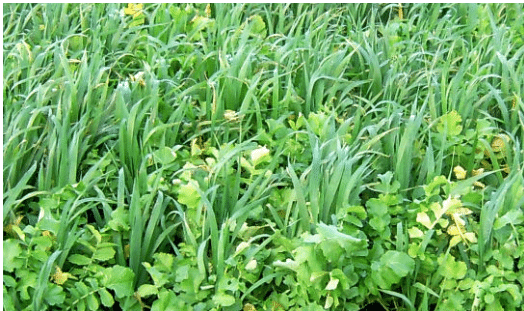
Midwest Cover Crops Council (MCCC-138)
Purdue Extension (AY-368-W)
This publication is intended to provide a starting point for farmers who are new to growing cover crops. With experience, farmers may fine-tune the use of cover crops for their systems.
The following recipe provides an introductory approach to integrating a cover crop into a wheat rotation with soybean or corn. Planting oat and daikon-type radish cover crops after wheat (see Figure 1) and ahead of a soybean or corn cash crop is an easy way to introduce cover crops into your rotation because these cover crops both winter-kill and add important diversity to agricultural fields.

Cover Crop Selector Tool —available from the Midwest Cover Crops Council
Residual Herbicides and Fall Cover Crop Establishment (Purdue Extension Weed Science publication)
Anna Morrow, Midwest Cover Crops Council; Shalamar Armstrong, Keith Johnson, Eileen Kladivko, and Dan Quinn, Purdue University (Note: This publication was adapted with consent from MCCC under a joint project to produce customized introductory guidance about cover crops for all member states/provinces.)
Barry Fisher, retired USDA–Natural Resources Conservation Service, Fisher Soil Health
December 2022
The U.S. Department of Agriculture (USDA) prohibits discrimination in all its programs and activities on the basis of race, color, national origin, age, disability, and where applicable, sex, marital status, familial status, parental status, religion, sexual orientation, genetic information, political beliefs, reprisal, or because all or a part of an individual’s income is derived from any public assistance program. (Not all prohibited bases apply to all programs.) Persons with disabilities who require alternative means for communication of program information (Braille, large print, audiotape, etc.) should contact USDA’s TARGET Center at (202) 720-2600 (voice and TDD). To file a complaint of discrimination write to USDA, Director, Office of Civil Rights, 1400 Independence Avenue, S.W., Washington, D.C. 20250-9410 or call (800) 795-3272 (voice) or (202) 720-6382 (TDD). USDA is an equal opportunity provider and employer. ©2022 by MCCC. All rights reserved.

Midwest Cover Crops Council (MCCC-129)
University of Guelph (SAG-FS-21-003)
This publication is intended to provide a starting point for farmers who are new to growing cover crops. With experience, many farmers fine-tune the use of cover crops for their systems.
This recipe provides an introductory approach to integrating a cover crop mix of oats and radish after an early harvested processing vegetable, such as snap beans, cucumbers, peas, or early tomatoes. Both oat and radish can successfully establish in late summer to early fall and usually winter-kill. It is a low-risk mix that will help control tough perennial or winter annual weeds, minimize erosion, build soil structure, reduce compaction, and add some extra diversity to your rotation.
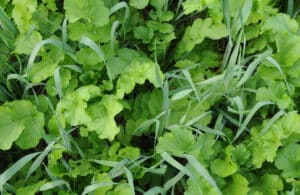
Cover Crop Selector Tool —available from Midwest Cover Crops Council
Best Management Practices: Winter Cover Crops (OMAFRA)
Cover Crop Seed Suppliers (OMAFRA)
Use and Management of Manure and Other Organic and/or Prescribed Materials (Ontario Soil and Crop Improvement Association Infosheet #17)
Guide to Weed Control: Hort Crops (OMAFRA publication 75B)
Vegetable Crop Protection Guide (OMAFRA publication 838)
Vegetable Production Information—Commercial Vegetable Production (OMAFRA)
Jordan Grigg, Cameron Ogilvie, and Laura Van Eerd, University of Guelph; and Anne Verhallen, OMAFRA (Note: This publication was adapted with consent from MCCC under a joint project to produce customized introductory guidance about cover crops for all member states/provinces.)
Kris McNaughton, University of Guelph, and Elaine Roddy, OMAFRA
November 2021
The U.S. Department of Agriculture (USDA) prohibits discrimination in all its programs and activities on the basis of race, color, national origin, age, disability, and where applicable, sex, marital status, familial status, parental status, religion, sexual orientation, genetic information, political beliefs, reprisal, or because all or a part of an individual’s income is derived from any public assistance program. (Not all prohibited bases apply to all programs.) Persons with disabilities who require alternative means for communication of program information (Braille, large print, audiotape, etc.) should contact USDA’s TARGET Center at (202) 720-2600 (voice and TDD). To file a complaint of discrimination write to USDA, Director, Office of Civil Rights, 1400 Independence Avenue, S.W., Washington, D.C. 20250-9410 or call (800) 795-3272 (voice) or (202) 720-6382 (TDD). USDA is an equal opportunity provider and employer. ©2021 by MCCC. All rights reserved.
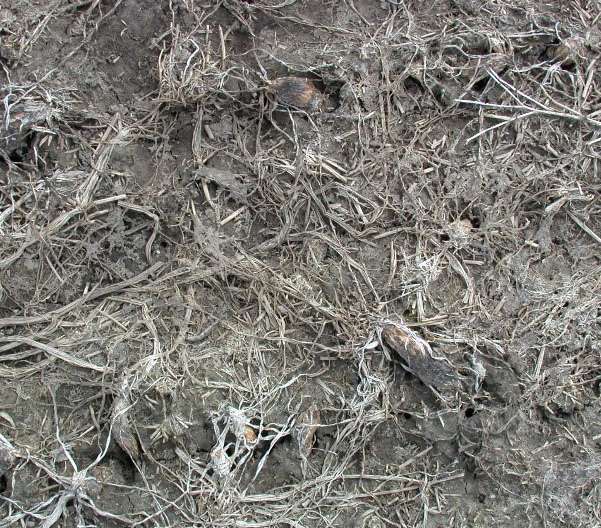
Midwest Cover Crops Council (MCCC-128)
University of Guelph (SAG-FS-21-003)
This publication is intended to provide a starting point for farmers who are new to growing cover crops. With experience, many farmers fine-tune the use of cover crops for their systems.
This recipe provides an introductory approach to integrating a cover crop mix of oats and radish after wheat harvest going to corn or soybean the next year. Since both oat and radish can be sown after wheat harvest and usually winter-kill, it is a low-risk mix that will help control tough perennial weeds, minimize erosion, build soil structure, reduce compaction, and add some extra diversity to your rotation.

Best Management Practices: Winter Cover Crops (OMAFRA)
Agronomy Guide for Field Crops (OMAFRA publication 811)
Cover Crop Selector Tool —available from Midwest Cover Crops Council
Use and Management of Manure and Other Organic and/or Prescribed Materials (Ontario Soil and Crop Improvement Association Infosheet #17)
Jordan Grigg, Cameron Ogilvie, and Laura Van Eerd, University of Guelph; and Anne Verhallen, OMAFRA (Note: This publication was adapted with consent from MCCC under a joint project to produce customized introductory guidance about cover crops for all member states/provinces.)
Joanna Follings, OMAFRA; David Hooker, University of Guelph; Tatianna Lozier, Upper Thames River Conservation Authority; Anne Vanasse, Université Laval; Marty Vermey, Grain Farmers of Ontario
July 2021
The U.S. Department of Agriculture (USDA) prohibits discrimination in all its programs and activities on the basis of race, color, national origin, age, disability, and where applicable, sex, marital status, familial status, parental status, religion, sexual orientation, genetic information, political beliefs, reprisal, or because all or a part of an individual’s income is derived from any public assistance program. (Not all prohibited bases apply to all programs.) Persons with disabilities who require alternative means for communication of program information (Braille, large print, audiotape, etc.) should contact USDA’s TARGET Center at (202) 720-2600 (voice and TDD). To file a complaint of discrimination write to USDA, Director, Office of Civil Rights, 1400 Independence Avenue, S.W., Washington, D.C. 20250-9410 or call (800) 795-3272 (voice) or (202) 720-6382 (TDD). USDA is an equal opportunity provider and employer. ©2021 by MCCC. All rights reserved.
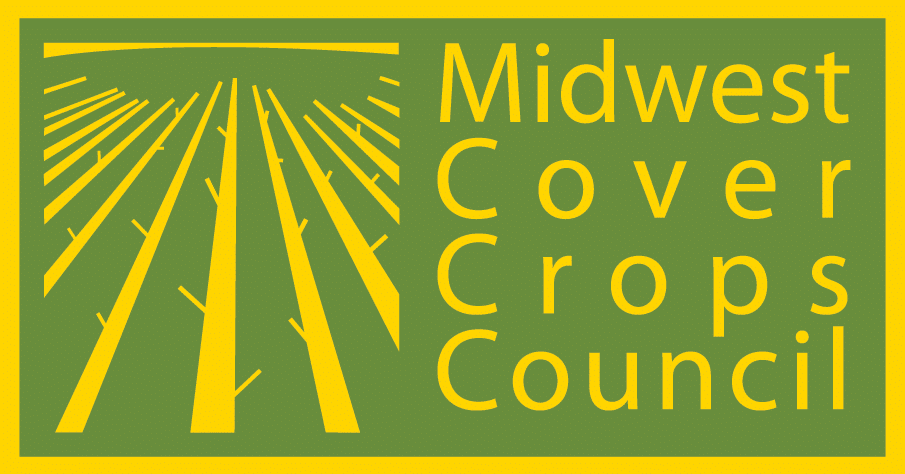


Midwest Cover Crops Council (MCCC-126)
This publication is intended to provide a starting point for farmers who are new to growing cover crops. With experience, farmers may fine-tune the use of cover crops for their systems.
A canning or processing crop such as green bean, sweet corn, or pea is harvested early or by midsummer and offers an excellent window to get adequate cover crop growth before any following crop. Cover crops following canning crops will protect soil from erosion and improve soil structure after heavy harvesting equipment is used to take off the canning crop. Some canning crops leave significant residual nitrogen (N) in the soil that is vulnerable to leaching, and a cover crop can retain that soil N for future crops. Since growers follow canning crops with any number of different rotations, a fast-growing species such as oats mixed with a light seeding of radish is a safe choice as both will winter-kill. With this combination, no spring termination is needed, and there is little chance of tying up N for the following year.
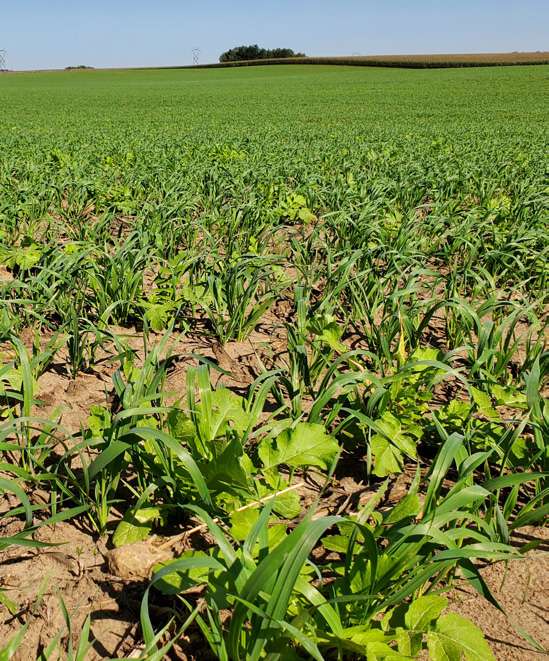

University of Minnesota Extension Cover Crop website
Cover Crop Selector Tool —available from Midwest Cover Crops Council
Minnesota NRCS Resources, including Minnesota Cover Crop Design Tool
USDA-NRCS Cover Crop Termination Guidelines
Using Herbicides and Cover Crops in Corn and Soybean (University of Minnesota Extension)
Anna Cates, University of Minnesota Extension; Ashley Gallagher, Dakota Soil and Water Conservation District (Minnesota); Steve Lawler, Mower Soil and Water Conservation District (Minnesota); and Matt Ruark, University of Wisconsin–Madison Division of Extension
Carl Rosen, University of Minnesota; Ken Schroeder and Dan Smith, University of Wisconsin–Madison Division of Extension; and Carissa Spencer, Minnesota NRCS
March 2021
The U.S. Department of Agriculture (USDA) prohibits discrimination in all its programs and activities on the basis of race, color, national origin, age, disability, and where applicable, sex, marital status, familial status, parental status, religion, sexual orientation, genetic information, political beliefs, reprisal, or because all or a part of an individual’s income is derived from any public assistance program. (Not all prohibited bases apply to all programs.) Persons with disabilities who require alternative means for communication of program information (Braille, large print, audiotape, etc.) should contact USDA’s TARGET Center at (202) 720-2600 (voice and TDD). To file a complaint of discrimination write to USDA, Director, Office of Civil Rights, 1400 Independence Avenue, S.W., Washington, D.C. 20250-9410 or call (800) 795-3272 (voice) or (202) 720-6382 (TDD). USDA is an equal opportunity provider and employer. ©2021 by MCCC. All rights reserved.
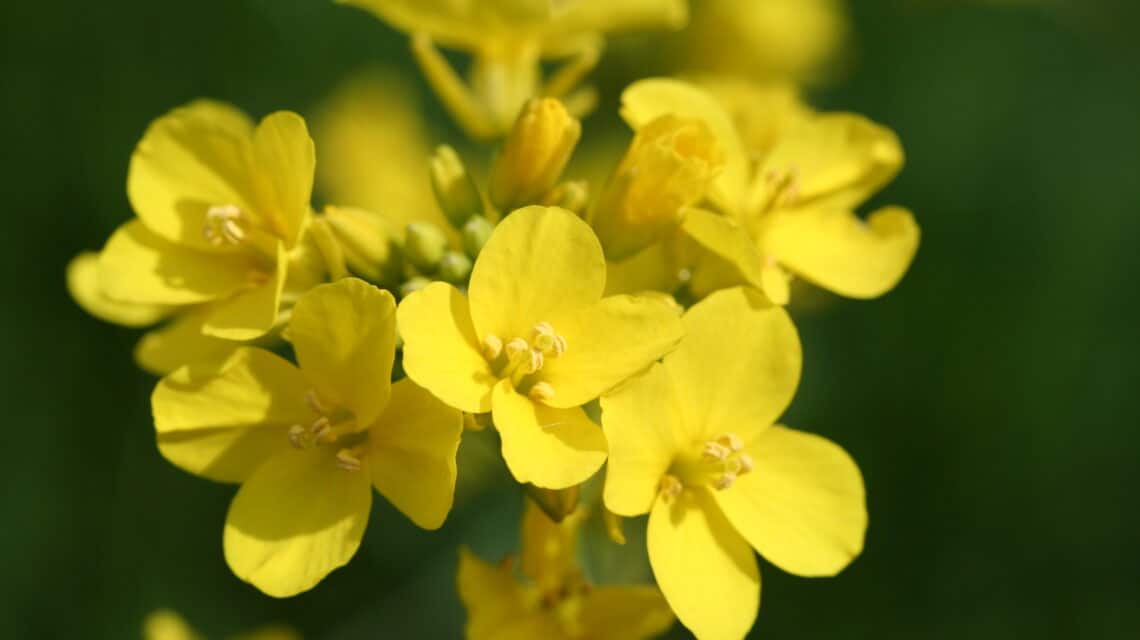
Eric Lee-Mader, Anne Stine, Jarrod Fowler, Jennifer Hopwood and Mace Vaughanby – Xerces Society for Invertebrate Conservation with contributions from the USDA Natural Resources Conservation Service
August 2017
Kim Cassida and Phil Kaatz – Michigan State University Extension
November 2019
Recommended Hay and Pasture Forages For Michigan
Source link here.